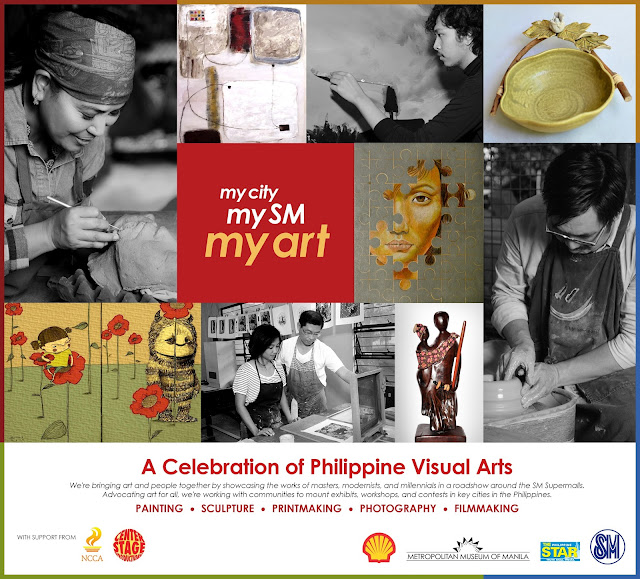The small gathering of the Blaan elders
Every Sunday, right after their church service, the old Blaans in Malungon gather together to socialize. Some of them chat, some play Fuglung and Gong, some do their beaded works, and some sing chants, while others just want to be with the group. They were all artisans where they gather together and reminiscing the old ways of Malungon. They are all relatives of Maricel Salinda-Kasaligan, a Blaan cultural advocate, who tries to gather them in one place, to help revive the tradition of their family.
As a History Graduate from Mindanao State University-GenSan, Maricel now appreciates the worth of her degree in college. Maricel's degree helps her in tracing the genealogy of her family, the history of Malungon (before and after the Christian settlers came) and the stories of cultural materials produced by the Blaan tribe. As an educated Blaan, she wants to know these things for cultural preservation. Through these efforts, the next generation of Blaans will know their history and cultural identity.
“It is important to trace the history of my family because it is one way of knowing myself and my tribe,” says Maricel. “It is a huge challenge to do it. I spend a lot of time talking to elders and other Blaans that could help me trace the genealogy of my family. Since I have a history background, I trace not only the bloodline of my family but also their socio-political and economic status as well as their traditional practices back then. Through tracing these factors, I would know what their contributions in the community are. I would know stories of the rise and fall of many communities or clans in Malungon, before and after the settlers came in our place.”
Without her curiosity and the challenge given by her grandparents, she would not have the courage to pursue these initiatives.
“By the doing these efforts, I get impressed of their skills, talents and leadership during those times. I get more excited as I discovered their stories. My grandparents gave me a challenge to help preserve our culture,” says Maricel.
“My maternal grandparents wanted me to take History as my degree in college. That time I did not understand why they said it. But later on I realized its importance especially now that I become one of the cultural advocates for my tribe.”
I must admit, I admire her for doing those efforts. In fact, I am inspired to trace my Maguindanaon-Tausug roots as she relates to me the story of her family. My two day immersion in sitio Cabdog, Barangay Malandag and Barangay Poblacion, Malungon Sarangani Province help me realized it. Moreover, it is a rare moment to witness the gathering of the elders. This brings me to my memories of my Apos when they were alive. Even though that time I did not fully understand the essence of such occasion, I enjoyed watching them as though there was a kanduli in our home.
Unlike that moment which I experienced during my childhood, I did not see young Blaans observing the ways of their elders when I was in their small gathering (except for Maricel's children). For me, being with them is a priceless moment. Observing the old Blaans laugh together as they reminisce the old Malungon is a once in a lifetime experience.
Their gathering in a small hut serves as transferring of their skills to other family members of the clan. For example, the old women who have knowledge in beaded works, share their techniques to their daughters. Fortunately, some of the family members, like the case of Maricel, are eager to learn the traditional Blaan embroidery.
 |
| Feeling Dad Fu (Grandson) moment with Fu Dalion Tolentino-Balientos, the Blaan Embroider from sitio Cabtog, Brgy. Malandag, Malungon Sarangani Province. |
I feel blessed to meet the maternal grandmother of Maricel - Fu Dalion Tolentino-Balientos, the Blaan Embroider of Albung Takmon (Mother Pearl), Albung Ansif and other beaded works. Her embroidered works have rich stories that are embedded on her designs. Just like her beaded works, Malungon has so many interesting stories that need to be documented and shared in order for us to know our local history and cultural heritage.
I am also fascinated about her stories relating to her paternal grandmother. On how Maricel describes her as multi-talented grandmother because of her many roles she played in their community. For example, her grandmother served as peace negotiator whenever conflict arises in their place. During those times, men usually do this task. But her grandmother proved that a woman can also do the responsibility of a man.
I would definitely go back to their community again. My two day immersion is not enough to know all of their stories and cultural materials. There is a need to know them all in order for us to fully appreciate its importance. By knowing it, we could understand our history and love our own identity.
Leave a comment below and let me know what you think.
Thank you



Comments
Post a Comment
The author encourages readers to post sensible comments in order to have meaningful discussions. Posting malicious, senseless and spam comments are highly discouraged.
Thank you for reading Yadu Karu's Blog.